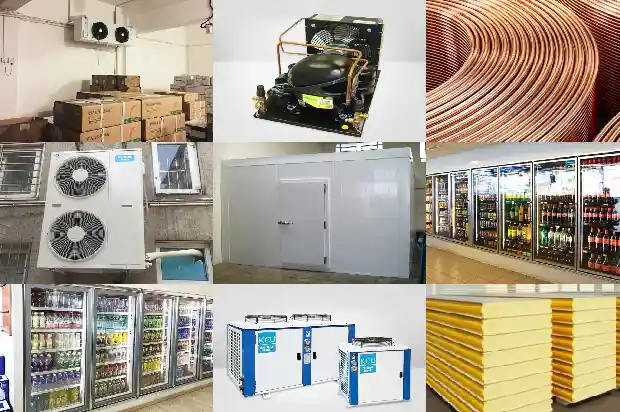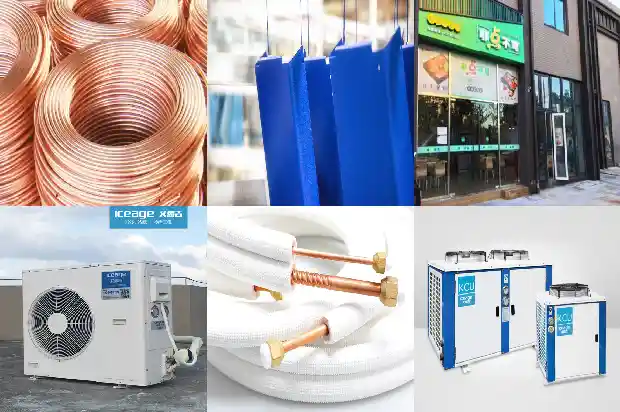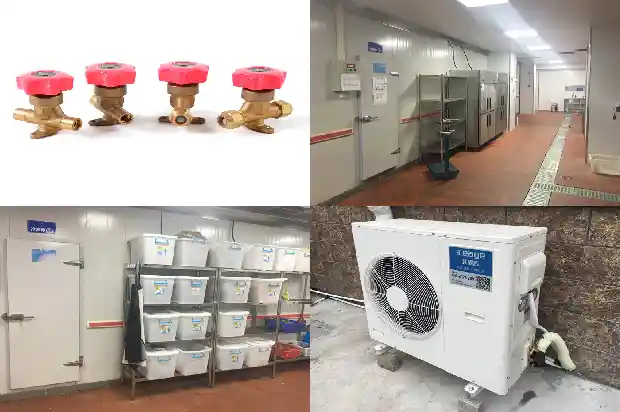Air Conditioner - Horsepower vs Air Conditioner - Refrigeration Capacity
2025-04-16
For a 20-square-meter bedroom that doesn't face the west sun and has good sealing and heat insulation, a model 26 (with a refrigeration capacity of 2600W) is sufficient. If the sealing and heat insulation are slightly poor, a model 30 can be chosen. If it faces the west sun and has poor sealing and heat insulation, models 32, 35, etc. can be selected.
If you choose based on the input power in "horsepower (HP)", you won't know how to make the choice. It can be seen that the so-called "horsepower (HP)" cannot accurately reflect the refrigeration capacity of the air conditioner. Only by referring to the refrigeration capacity parameter marked on the air conditioner model is it accurate and scientific.
However, based on the current market situation, I will explain a bit more. "Horsepower (HP)" is used to indicate the refrigeration and heating capacity of the air conditioner. Currently, the common HP ratings of air conditioners on the market are 1P, large 1P, 1.5P, large 1.5P, 2P, etc. These HP ratings mainly refer to the air conditioners in bedrooms. For the air conditioners in the living room, there are large 2P, large 3P, and those above large 5P. Remember, based on the vague empirical values, the following empirical relationship can be derived, that is: The relationship between the HP rating of the air conditioner and the area:
Bedroom:
The cooling area of a 1P cooling and heating wall-mounted air conditioner is 10-16 square meters, and the heating area is 8-14 square meters.
The cooling area of a 1.3P cooling and heating wall-mounted air conditioner is 12-20 square meters, and the heating area is 9-16 square meters.
The cooling area of a 1.5P cooling and heating wall-mounted air conditioner is 14-22 square meters, and the heating area is 10-18 square meters.
The cooling area of a 1.8P cooling and heating wall-mounted air conditioner is 18-29 square meters, and the heating area is 12-22 square meters.
Living room:
The cooling area of a 2P cooling and heating wall-mounted air conditioner is 20-31 square meters, and the heating area is 13-24 square meters.
The cooling area of a 2.5P cooling and heating cabinet air conditioner is 24-38 square meters, and the heating area is 18-33 square meters.
The cooling area of a 3P cooling and heating cabinet air conditioner is 28-45 square meters, and the heating area is 20-40 square meters.
When choosing an air conditioner based on "horsepower (HP)", don't even think about thermal comfort (the degree of comfort of a person staying in the house) and the rationality of the air flow organization (the size, direction, and range of the wind)!
In addition, the power supply situation of the room also needs to be considered. Generally, air conditioners above model 50 have the difference between two-phase power supply and three-phase power supply. If there is three-phase electricity, a three-phase air conditioner should be selected as much as possible, because the current of each phase is relatively small, which is beneficial to electrical safety.
By looking at the model and energy efficiency ratio of the air conditioner, you can know the electric power consumption when the air conditioner is working. However, "horsepower (HP)" can be used to measure the energy efficiency ratio of this air conditioner, that is, the ratio of the input power (converted to the unit power consumption according to the monthly air conditioner electricity bill) to the output power (refrigeration capacity).
Refrigeration power ÷ Energy efficiency ratio = Electric power (W).
1 British horsepower (HP) (horsepower) = 0.746KW (kilowatt) = 746W
2 metric horsepower (HP) (horsepower) = 0.735KW (kilowatt) = 735W
1 kilowatt-hour = 1 degree of electricity. In the current air conditioner industry, due to cost reasons, the power consumption of a 1HP air conditioner is already much greater than 735W. The power consumption of a poor-quality air conditioner has reached 950W, and the best one is also about 750W. No one can say for sure who made the motor, compressor, and fan inside, or how they are combined! (The data in this paragraph comes from the Internet)
Finally, when you buy an air conditioner, it is better to be guided by the refrigeration capacity!

If you choose based on the input power in "horsepower (HP)", you won't know how to make the choice. It can be seen that the so-called "horsepower (HP)" cannot accurately reflect the refrigeration capacity of the air conditioner. Only by referring to the refrigeration capacity parameter marked on the air conditioner model is it accurate and scientific.
However, based on the current market situation, I will explain a bit more. "Horsepower (HP)" is used to indicate the refrigeration and heating capacity of the air conditioner. Currently, the common HP ratings of air conditioners on the market are 1P, large 1P, 1.5P, large 1.5P, 2P, etc. These HP ratings mainly refer to the air conditioners in bedrooms. For the air conditioners in the living room, there are large 2P, large 3P, and those above large 5P. Remember, based on the vague empirical values, the following empirical relationship can be derived, that is: The relationship between the HP rating of the air conditioner and the area:
Bedroom:
The cooling area of a 1P cooling and heating wall-mounted air conditioner is 10-16 square meters, and the heating area is 8-14 square meters.
The cooling area of a 1.3P cooling and heating wall-mounted air conditioner is 12-20 square meters, and the heating area is 9-16 square meters.
The cooling area of a 1.5P cooling and heating wall-mounted air conditioner is 14-22 square meters, and the heating area is 10-18 square meters.
The cooling area of a 1.8P cooling and heating wall-mounted air conditioner is 18-29 square meters, and the heating area is 12-22 square meters.
Living room:
The cooling area of a 2P cooling and heating wall-mounted air conditioner is 20-31 square meters, and the heating area is 13-24 square meters.
The cooling area of a 2.5P cooling and heating cabinet air conditioner is 24-38 square meters, and the heating area is 18-33 square meters.

The cooling area of a 3P cooling and heating cabinet air conditioner is 28-45 square meters, and the heating area is 20-40 square meters.

When choosing an air conditioner based on "horsepower (HP)", don't even think about thermal comfort (the degree of comfort of a person staying in the house) and the rationality of the air flow organization (the size, direction, and range of the wind)!
In addition, the power supply situation of the room also needs to be considered. Generally, air conditioners above model 50 have the difference between two-phase power supply and three-phase power supply. If there is three-phase electricity, a three-phase air conditioner should be selected as much as possible, because the current of each phase is relatively small, which is beneficial to electrical safety.
By looking at the model and energy efficiency ratio of the air conditioner, you can know the electric power consumption when the air conditioner is working. However, "horsepower (HP)" can be used to measure the energy efficiency ratio of this air conditioner, that is, the ratio of the input power (converted to the unit power consumption according to the monthly air conditioner electricity bill) to the output power (refrigeration capacity).
Refrigeration power ÷ Energy efficiency ratio = Electric power (W).
1 British horsepower (HP) (horsepower) = 0.746KW (kilowatt) = 746W
2 metric horsepower (HP) (horsepower) = 0.735KW (kilowatt) = 735W
1 kilowatt-hour = 1 degree of electricity. In the current air conditioner industry, due to cost reasons, the power consumption of a 1HP air conditioner is already much greater than 735W. The power consumption of a poor-quality air conditioner has reached 950W, and the best one is also about 750W. No one can say for sure who made the motor, compressor, and fan inside, or how they are combined! (The data in this paragraph comes from the Internet)
Finally, when you buy an air conditioner, it is better to be guided by the refrigeration capacity!
Related Articles
- Basic Tutorial on the Selection and Design of Water Pumps for Central Air Conditioning Water Systems
- Air Conditioning Design Schemes for Large Spaces like Theatres and Gymnasiums
- Calculation Method of the Cooling Capacity of Computer Room Air Conditioners
- Do You Really Understand Automotive Air Conditioning Refrigerant and Refrigeration Oil?
- Principles, Characteristics, Selection and Precautions of Air-cooled Modular Units
- Countermeasures for Common Problems of Defrosting during Winter Heating of Air-cooled Modules
- Precautions for Refrigerant Charging and Maintenance Key Points of R410A Refrigerant Air Conditioners
- How to Choose Between Inverter Air Conditioners and Fixed-frequency Air Conditioners? Let's See What Maintenance Technicians Say
- What Malfunction Does "E2" Indicate on an Air Conditioner?
- Can a Tiny Copper Tube Cause a Multi - Split Air Conditioner to Stop Cooling?
- In - depth Explanation of Large - temperature - difference Ice - storage Air - conditioning Systems
- Comprehensive Insights into Large - Temperature - Difference Ice - storage Air - Conditioning Systems
- Comprehensive Maintenance Guide for Air - Conditioning Hosts, Ducts, Chilled Water, and Cooling Water
- A Summary of 11 Common Faults in Refrigeration and Air Conditioning Systems
- Winter Anti-freezing Measures for Air Conditioning Equipment and Fire Protection Systems
- A Complete Guide to the Operation, Malfunctions and Repair Methods of Dry Screw Refrigeration Compressors!
- In Refrigeration Repair, Analyzing and Handling Three Major Series of Malfunctions - "Blockage", "High Pressure" and "High Discharge Temperature" are Essential!
- How to Properly Remove Ammonia Refrigerant during Refrigeration Parts Repair
